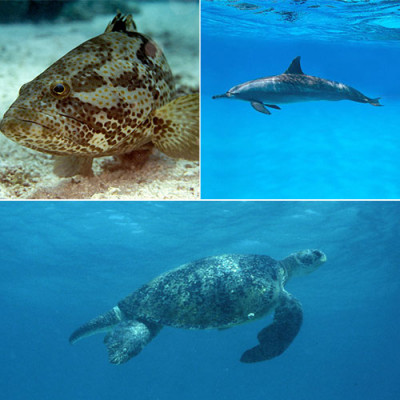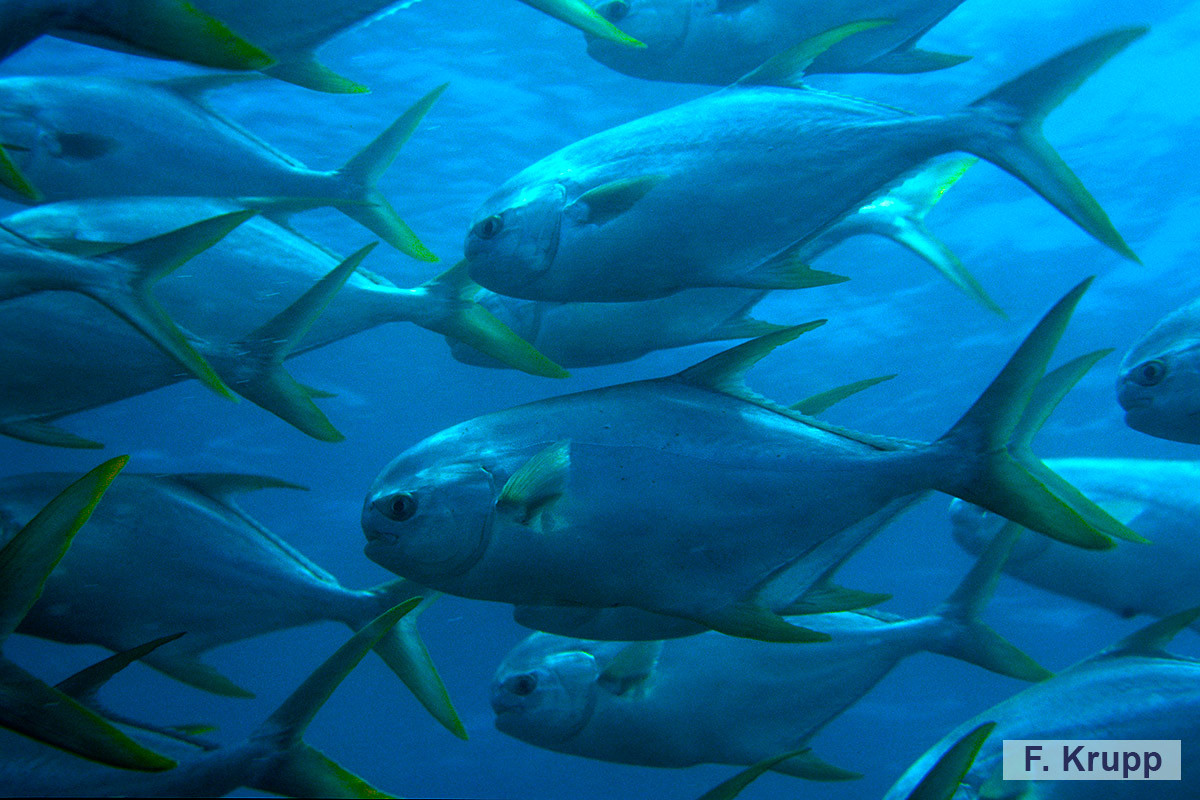Name: Snubnose Pompano
Local name: Busalbokh
Scientific name: Trachinotus blochii
Classification: Class: ray-finned fishes; Order: perch-likes; Family: jacks (Carangidae)
Size: It reaches a maximum size of 65 cm.
Habitat:
Adults inhabit clear seaward coral and rocky areas, usually as solitary individuals, feeding primarily on mollusks and other hard-shelled invertebrates living in the sand. Juveniles form small schools and occur in sandy inshore areas or muddy bays.
Distribution:
This species is widespread in the tropical Indo-Pacific, from the Red Sea and the east coast of Africa, east to the Marshall and Samoa Islands, north to Japan, and south to Australia.
Conservation status:
It has not yet been assessed globally by the IUCN Red List of Threatened Species. In a recent regional assessment for the Arabian Gulf it was classified as Least Concern (LC). The species is mainly caught by traps, gillnets and handlines.
Description:
The body is compressed and moderately deep, the depth decreasing with growth. The dorsal profile of the head is very steep and strongly convex. The anterior lobes of the second dorsal and anal fins are long, and in adults the dorsal lobe is longer than the anal lobe. The caudal fin is very large and deeply forked. Head and body coloration are bluish silver dorsally, shading to silvery or golden ventrally. The front of the snout and the lips are golden yellow, and fins are yellow to yellowish grey. The leading margins of the second dorsal, anal, and caudal fins are narrowly brownish to blackish.








